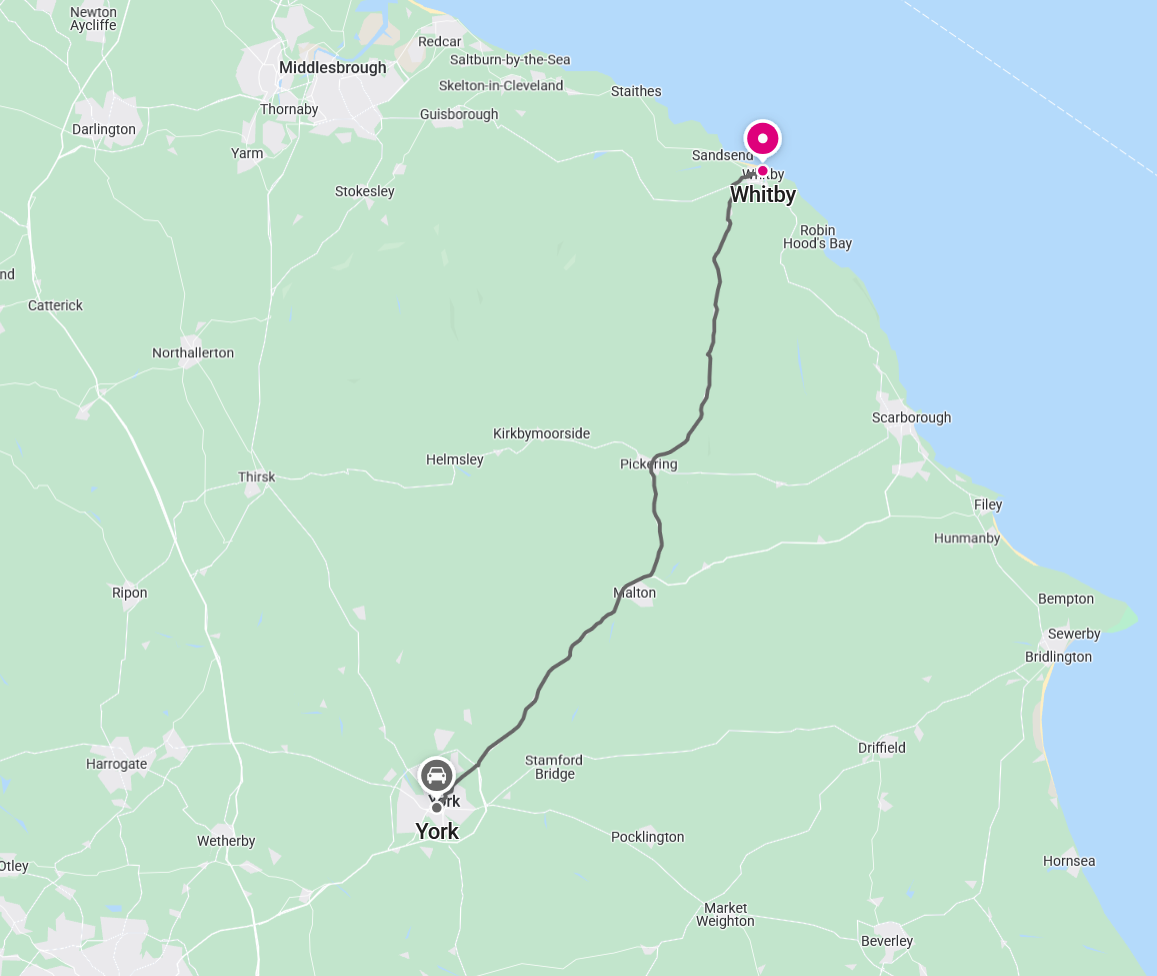Whitby Abbey
Whitby Abbey was a 7th-century Christian monastery that later became a Benedictine abbey. The abbey church was situated overlooking the North Sea on the East Cliff above Whitby in North Yorkshire, England, a centre of the medieval Northumbrian kingdom. The abbey and its possessions were confiscated by the crown under Henry VIII during the Dissolution of the Monasteries between 1536 and 1545.
The first monastery was founded in 657 AD by the Anglo-Saxon era King of Northumbria, Oswy (Oswiu) as Streoneshalh (the older name for Whitby). He appointed Lady Hilda, abbess of Hartlepool Abbey and grand-niece of Edwin, the first Christian king of Northumbria, as founding abbess. The name Streoneshalh is thought to signify Fort Bay or Tower Bay, in reference to a supposed Roman settlement that previously existed on the site. This contention has never been proven and alternative theories have been proposed, such as the name meaning Streona's settlement. Some believe that the name referred to Eadric Streona, but Streona died in 1017 so the naming of Streoneshalh would have preceded his birth by several hundred years.
Streoneshalch monastery was laid waste by Danes in successive raids between 867 and 870 under Ingwar and Ubba and remained desolate for more than 200 years. A locality named 'Prestebi' was recorded in the Domesday Book of 1086, which may be a sign that religious life was revived in some form after the Danish raids; 'Witebi' (Whitby) is also mentioned. In Old Norse, Prestebi means a habitation of priests.[9] The old monastery given to Reinfrid comprised about 40 ruined monasteria vel oratoria, similar to Irish monastic ruins with numerous chapels and cells
Reinfrid, a soldier of William the Conqueror, became a monk and travelled to Streoneshalh, which was then known as Prestebi or Hwitebi (the "white settlement" in Old Norse). He approached William de Percy for a grant of land, who gave him the ruined monastery of St. Peter with two carucates of land, to found a new monastery. Serlo de Percy, the founder's brother, joined Reinfrid at the new monastery, which followed the Benedictine rule.[10] The greater part of de Percy's building was pulled down and the monastery was rebuilt on a larger scale in the 1220s.
The Benedictine abbey thrived for centuries as a centre of learning. This second monastery was destroyed by Henry VIII in 1540 during the Dissolution of the Monasteries. The abbey was bought by Sir Richard Cholmley. It remained in the Cholmley family and their descendants, the Strickland family. The Strickland family passed it to the UK_government in 1920.[12] The ruins are now owned and maintained by English Heritage.
en.wikipedia.org










































